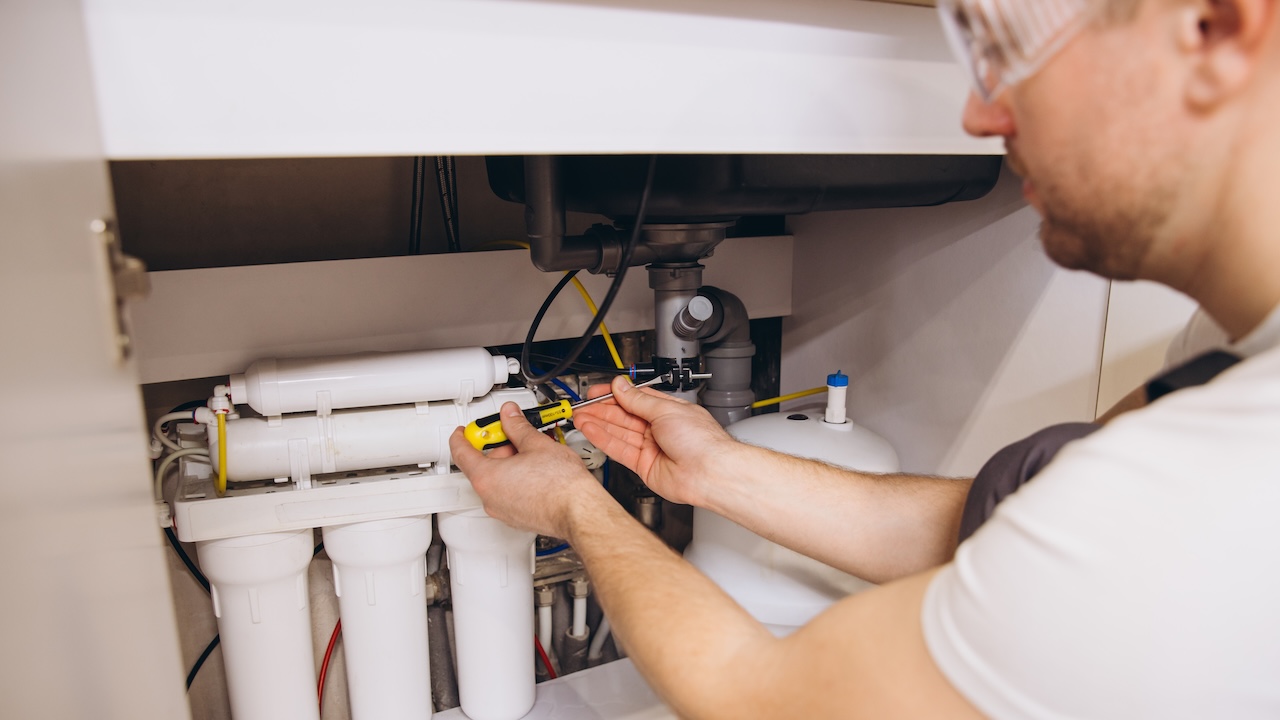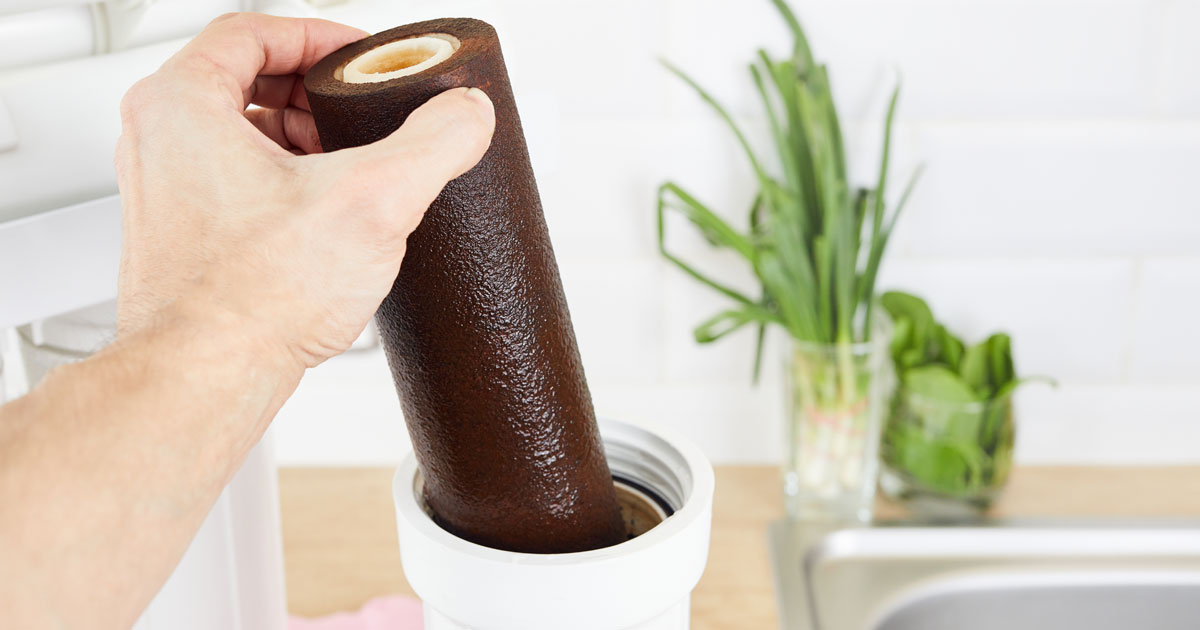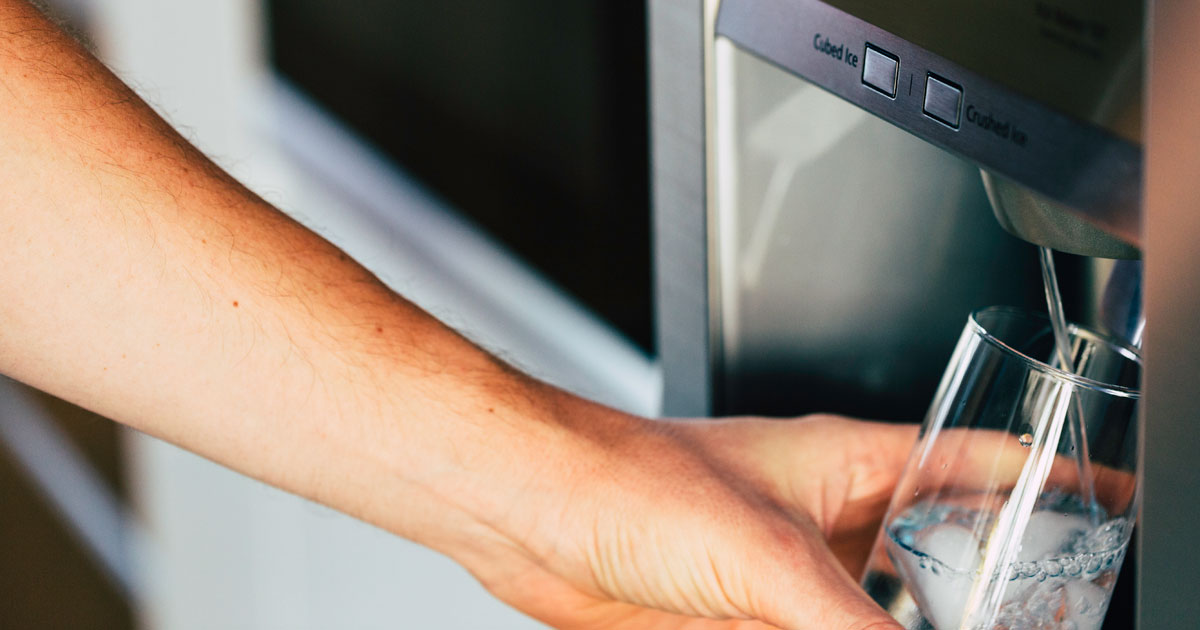How to Clean a Moldy Water Filter and Keep It That Way
 Shu
November 26, 2025
#badtaste
#cleanfilter
#cleanmold
#odor
Shu
November 26, 2025
#badtaste
#cleanfilter
#cleanmold
#odor

- Show you how to identify mold in filter through signs like unusual taste, odor, cloudy water, and reduced flow.
- Walk through a seven-step cleaning process using hydrogen peroxide or vinegar to safely eliminate mold without damaging your filter or leaving toxic residue.
- Guide you on when to clean versus replace filters, including which systems must be replaced and which can be safely restored.
- Discuss why filters create ideal conditions for mold growth and share prevention strategies.
Every family relies on clean, safe drinking water in their homes. But what if the filter that is supposed to clean your water is growing mold or even fungus? You may notice that the water in your fridge suddenly has a bad smell, or the water that comes out of your faucet doesn't taste like it used to, only to discover that the old filter hasn't been changed in over six months.
In these circumstances, mold can grow inside the wet, sealed filter compartment, potentially contaminating your drinking water. Fortunately, there are ways to eliminate mold safely and prevent it from coming back. In this guide, we'll explain how to safely remove mold from your filtration system and make sure it stays that way.
Mold tends to form in moist, dark environments where particles can become trapped, which is why a water filter can be an ideal place if it isn't cleaned properly. Over time, moisture and debris inside the filter can develop ideal conditions for mold to form.
It's like having a wet sponge in a container without proper air circulation or open space. Eventually, the sponge will form mold and create an odor. The same circumstance happens in a water filter that hasn't been cleaned—moisture and debris start to accumulate.
Signs of Mold in a Water Filter
Checking for fungus or other contaminants in your water filter is important because this can help prevent harmful compounds. If your water has a strange smell or takes longer to flow, it could be a sign that the filter has stopped working properly.
For example, if you're using an under-sink water filter and notice the water flow becomes sluggish over time and there's an unusual taste, there may be mold growth. Upon closer inspection, you may see small patches of mold around the housing.
Even without a strong smell, these signs indicate that the filter is clogged and needs to be cleaned or replaced. Here are some common signs of mold in a water filter:
- Cloudy or dirty water
- Noticeable spots or color changes
- Damp or soil-like smell
- Off or unexpected taste
You can safely clean your water filter and restore the way it works if you've found contaminants like fungus in it. Just remember that some filters, such as those found in disposable refrigerator cartridges, may need to be changed rather than cleaned. Here's a guide for common reusable systems.
Step 1: Carefully Remove the Filter
First, locate the valve that controls the water supply to your house and turn it off. Carefully remove the filter from its housing without tapping or shaking it too hard, as this can release mold in the water filter and cause it to spread into the air and surrounding surfaces.
Place the filter on a clean surface to contain any mold and prevent residue from spreading to other countertops or sinks. If you have a system with many filters, like a reverse osmosis (RO) system, it can help to label them to ensure each one is reinstalled correctly.

Step 2: Make a Cleaning Solution
Choosing the right cleaning solution will ensure the mold is removed safely and effectively. Here are some options:
- Hydrogen peroxide (3%): Use a container big enough to completely submerge the water filter in an undiluted 3% hydrogen peroxide solution to remove the mold. Hydrogen peroxide is often recommended because it penetrates the cells and destroys them without leaving any toxic residue behind.
- Water and vinegar: In a clean container, combine equal parts of water and vinegar. Vinegar contains acetic acid, which can disrupt the growth of fungus in the water filter, providing an effective treatment option.
Step 3: Soak the Filter
The next step is to completely immerse the filter in the container with the cleaning solution you've prepared. Make sure all the surfaces, including the inner media, are submerged so the solution can effectively get rid of all the mold in the water filter.
Give the filter about an hour to soak so it has enough time for the vinegar or hydrogen peroxide to loosen biofilm, kill mold spores, and remove any buildup inside the filter. You can soak the filter a little longer if it's really dirty, but don't leave it overnight, as this can damage the filter.
Step 4: Scrub the Filter
After it has finished soaking, it's essential to remove any mold or buildup that has come loose. Take the water filter out of the cleaning solution and examine it in a bright area so you can see any spots where mold or residue may still be present.
Scrub the exterior gently with a soft brush, sponge, or old toothbrush. Pay attention to any obvious mold growth in joints and seams where debris tends to gather. It's usually best to avoid using harsh cleaning materials like steel wool, as these can damage the delicate material in the filter.
Step 5: Rinse the Filter Well
It's important to rinse well because it removes any leftover debris, fungus, or cleaning solution, ensuring your water filter is safe to reuse. Rinse the filter from all sides under warm running tap water and rotate it slowly to allow the water to pass through.
Rinse the filter until the water runs completely clear to ensure there's no more mold. It usually takes about two minutes of rinsing for the smell of vinegar, peroxide, or cleaning agent to disappear.
Step 6: Let It Air Dry Completely
Once you've finished rinsing it, allow the filter to dry completely. The reason for this is that even a tiny amount of leftover moisture can contain bacteria, which could make regrowth possible after the filter has been reinstalled.
Shake off as much water as possible at first, just enough to get rid of surface water. Don't squeeze or twist the filter, as this can damage the inside layers. Just leave it somewhere with good airflow, like under a fan or near a window.
There should be no traces of mold in the water filter by now. Allow it to completely dry for about 24 hours, and keep the filter away from heat sources like hair dryers or direct sunlight, as this can damage the filter material.
Step 7: Reinstall the Filter and Flush
Once your filter is dry, carefully reinsert it into the housing or slot. If you see any remaining residue or fungus in the water filter, wipe it with a paper towel or cloth before putting it back.
To prevent leaks, make sure all water filter parts that fit between surfaces, like gaskets, seals, and O-rings, are clean and properly positioned. If you notice that any of these parts look worn out, it's usually best to replace them.
Now that your water filter is free of mold, carefully put it back in its place. Turn your water supply back on and run cold water through it for a few minutes to clear the system. This ensures that leftover debris or cleaning solution is removed and there is no air left trapped in the filter.
Consistent care is key to preventing mold, as it doesn't get a chance to grow if you clean the housing or change the filter regularly. Here's how to prevent it from coming back:
- Check the manufacturer's guide and replace filters at the recommended frequency.
- Keep mold away by using vinegar and water to wipe your filter every few weeks. While refrigerator filters are not meant to be cleaned, ensure the tubing lines and dispenser parts are clean by descaling with a vinegar and water solution.
- Stagnant water can become a breeding ground for fungus, so don't let the water in your filter stand for days.
- Keep your filter in a dry area that's properly ventilated to prevent an environment that is conducive to mold growth.
Conclusion
You can get rid of mold accumulation before it has a chance to spread by soaking, cleaning, rinsing, and letting your filter dry completely before putting it back. It's a bit like washing dishes right away after a meal, as this stops mold from growing in the sink, just like regular cleaning keeps your water filter hygienic. At All Filters, we stock a wide selection of refrigerator water filters so you can always find a replacement.






